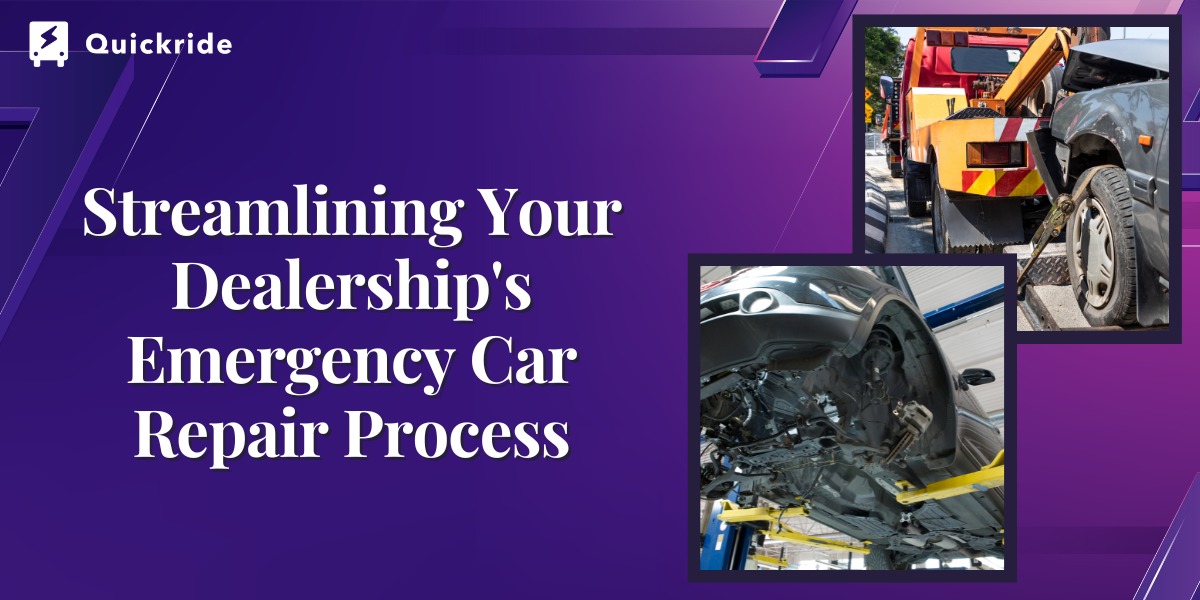If you're a dealership operator, you know that the emergency car repair process can be a time-consuming and frustrating experience for your customers. In today's world of instant and immediate information, customers expect their vehicles to be fixed quickly, and they don't want to wait around for hours while their cars are being repaired by a mechanic who may or may not show up at all. In this post, I'll discuss how a team of dedicated mobile mechanics can help streamline your dealership's emergency car repair process so that it runs more smoothly for both customers and employees alike.
Step 1: Identifying the Problem
The first step to streamlining your dealership's emergency car repair process is to identify the problem. You can do this by examining the current process and identifying inefficiencies, areas for improvement, and possible solutions. Here are some tips:
Tip 1: Analyze Customer Feedback and Complaints
One of the most effective ways to identify problems in your dealership's emergency car repair process is to gather and analyze customer feedback and complaints. Encourage customers to share their experiences, both positive and negative, through surveys, online reviews, or even face-to-face conversations. Look for patterns in the feedback, and pay special attention to recurring issues, as these may indicate a deeper problem that needs to be addressed.
Tip 2: Observe the Process in Action
Another essential tip to identify problems in your roadside/emergency car repair process is to observe the process in action. Spend time in the service area, watching your service technicians and other staff members interact with customers and perform their tasks. Take note of any bottlenecks, delays, or confusion that may arise and consider how these issues might be contributing to an inefficient system.
Tip 3: Benchmark against Industry Best Practices
Finally, to effectively identify problems in your dealership's emergency car repair process, compare your current system to industry best practices. Research how other successful dealerships handle their emergency car repair process and identify areas where your dealership may be lagging behind. This can provide valuable insights into potential improvements and help you prioritize the changes that will have the greatest impact on your overall process efficiency.
Step 2: Analyzing the Options
The subsequent phase in refining your dealership's emergency car repair process involves assessing the advantages and disadvantages of various solutions. While this may seem straightforward, it can be challenging to impartially evaluate the strengths and drawbacks of each option. To achieve this, consider the following three tips:
Tip 1: Assess Costs and Benefits
When examining each solution, weigh the costs associated with implementation against the potential benefits. This includes not only monetary expenses but also the time and resources required to execute the solution. Determine if the benefits outweigh the costs and if the solution is a worthwhile investment.
Tip 2: Estimate Time to Implement
Consider the time it will take to implement each solution, from the initial planning stages to full execution. This estimation should include the time required to train staff, integrate new systems, and adapt to any changes in the process. Ensure that the implementation timeline aligns with your dealership's goals and expectations.
Tip 3: Evaluate Alignment with Goals
Lastly, evaluate each solution based on its ability to help you achieve your dealership's objectives, such as increasing sales, enhancing customer satisfaction, or improving overall efficiency. Focus on solutions that directly contribute to the achievement of these goals and have a measurable impact on your dealership's success.
Step 3: Implementing a Mobile Mechanic Service
Introducing a mobile mechanic service is the optimal strategy for enhancing your dealership's emergency car repair process. Here are three key advantages to consider:
Tip 1: Faster Service and Increased Customer Satisfaction
By offering mobile mechanic services, you can deliver quicker assistance to customers requiring immediate attention. This not only helps them return to the road sooner but also minimizes additional expenses. With faster service and reduced waiting times, customer satisfaction is likely to increase.
Tip 2: On-site Repairs and Flexible Scheduling
Equipped with the necessary tools, mobile mechanics can perform various repairs at the customer's location, eliminating the need for long waits for parts or repairs from external sources. This flexibility in scheduling appointments means you can accurately estimate job durations, ensuring efficient time management.
Tip 3: Cost Savings and Convenience
When evaluating the benefits of mobile mechanics, it's essential to consider the potential cost savings. By performing on-site repairs, mobile mechanics can avoid the expenses associated with transporting parts or time-consuming diagnostics. Additionally, having all required tools in their trucks means there's no need for them to travel between locations, saving both time and money. Furthermore, customers will appreciate the convenience of having their cars repaired at their homes or workplaces, without needing to take time off work to drop off their vehicles at a shop during business hours.
Step 4: Communicating the Process to Employees
To ensure that your employees are aware of the process, it's important to outline the steps for training them. This includes identifying the resources needed to ensure they are trained and ready to handle emergency repairs when they occur. You should also create a culture of understanding and accountability within your dealership by ensuring that all employees understand their role in helping customers through this difficult situation.
Step 5: Assessing and Refining the Process
After devising a method to measure the effectiveness of your emergency car repair process, it's crucial to define success benchmarks. This ensures that you meet customer expectations and receive positive feedback from those who have utilized your service.
Benchmarks should be determined based on your dealership's and customers' needs. For instance, if one of your objectives is to decrease the duration of an oil change by 15 minutes, this would serve as a benchmark, as it signifies an enhancement in comparison to previous performance levels. It may even inspire other departments within the dealership to follow suit.
With these benchmarks in place, utilize them as part of a continuous feedback loop for improvement. If a specific benchmark isn't being achieved consistently or frequently enough, or if there are numerous instances of complications, appropriate adjustments should be made (such as hiring additional staff) until the issues are resolved satisfactorily.
Step 6: Manage Your Appointments Wisely
Quickride can help streamline the emergency car repair process by providing proper scheduling and transparency between jobs. With Quickride's Jobs Platform, customers can contact their Specialists directly from their secure web app, allowing for clear communication and transparency throughout the repair process. Additionally, Quickride offers driver tracking with status and ETA updates, which can help customers plan accordingly and reduce wait times. By utilizing Quickride's platform, businesses can improve their emergency repair process and provide a better experience for their customers.
Quickride is offering a 30-day free trial for our Jobs Platform, with no credit card or obligations required. Interested businesses can create an account in less than 10 minutes and start streamlining their repair processes today.
Conclusion
Streamlining the emergency car repair process can be a challenge, but it's not impossible. Mobile mechanics are a great way to help your service department improve its efficiency and reduce downtime. Service managers and Fixed Operations Directors should consider implementing a mobile mechanic program at your dealerships as soon as possible, using Quickride’s Jobs Platform to schedule/manage appointments and give customers that instant experience they are used to.


